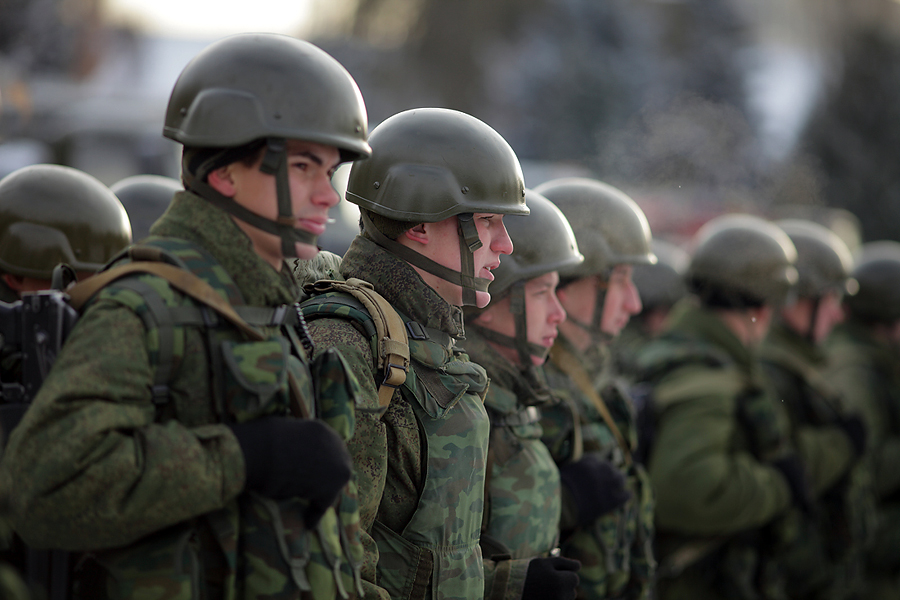
Moscow Pulls Back the Curtain on Zapad 2013
Publication: Eurasia Daily Monitor Volume: 10 Issue: 118
By:

Four years ago, Russia conducted an exercise called Zapad (West) 2009 to test the efficacy of its, then, new military reforms as well as its doctrine and strategy. Today, that exercise is most remembered for its culmination, namely the simulation of a tactical nuclear strike on Warsaw. Russia and Belarus are now planning a Zapad 2013 exercise for the fall, and they have begun to release information about what it will look like. And it seems that it will resemble Zapad 2009 in many respects. Zapad 2009 simulated a war beginning when Belarus was attacked by Poland and Lithuania for allegedly mistreating its Lithuanian minority, and this steadily escalated to the point of nuclear strikes. Likewise, Zapad 2013 has adopted the crisis scenario of a conflict developing out of the “deterioration of relations between states due to inter-ethnic, and ethno-religious controversies, and territorial claims” (Interfax-AVN Online, June 7). The simulated conflicts will be situated within the boundaries of Belarus and three western and northwestern regions of the Russian Federation, adjacent to on the Baltic region.
As part of Zapad 2013, Russian and Belarusian soldiers will practice the deterrence of air strikes upon the Union state of these two governments. So despite the mention of “illegal armed groups”—generally connoting terrorist forces—this year’s exercise will represent another theater conventional or at least local war (lokal’naia voina) with advanced air strikes, air defenses, and so on (Interfax-AVN Online, June 10). In spite of growing evidence that the primary military threat to Russia is terrorism, the armed forces are evidently going to repeat a scenario of escalation against the North Atlantic Treaty Organization (NATO), possibly to the nuclear level as in 2009.
These inauspicious developments come on the heels of other distressing phenomena in the Baltic area, which has become the apparent “theater of choice” for Moscow’s threat assessments. Presumably in response to the United States’ ballistic missile defense (BMD) (and, though Moscow will not admit it, Chinese conventional and nuclear modernization), Russia is not only modernizing its nuclear arsenal and producing new nuclear weapons, it also is building its own missile defenses and modernizing a new digital missile defense system around Moscow (Interfax, May 14; Washington Free Beacon, May 16; Izvestiya Online, May 14). Furthermore, Moscow intends to spend over 100 billion rubles ($3 billion) on nuclear weapons in 2013–15, going well beyond the 2012 budget (RIA Novosti Online, October 17, 2012). And Russia is building a new military air base in Belarus that no doubt will figure prominently in future exercises if not actual combat operations (Gazeta.ru, June 6). Apart from this base’s negative implications for Belarus’s sovereignty and independence, all these moves, together with the larger defense policy and appropriations of which they are a part, represent a growing aggressiveness in word and deed by Russia.
Deputy Defense Minister Anatoly Antonov has publicly said the Conventional Forces in Europe (CFE) treaty is dead and rejected calls for Russia to withdraw from the Caucasus, even though Moscow’s presence there violates the treaty (Interfax, May 23). Chief of the General Staff, General Vasily Gerasimov signaled the Kremlin’s reluctance to enter into new arms control negotiations and wariness about any further cuts to its nuclear arsenal. He again asserted that US plans to arm missiles with conventional warheads should be part of the agenda, trying to undermine both Washington’s conventional superiority and its strategy of prompt global strike lest these weapons target strategic Russian facilities. Gerasimov also claimed that BMD development prevents cuts to offensive weapons—even though Russia boasts of weapons that could penetrate any missile defense and simultaneously builds up its own missile defenses (RIA Novosti, AP, May 23).
Of course neither Antonov nor Gerasimov commented on the abundant evidence that Russian ground forces in the western strategic direction comprising Belarus and the Baltic littoral are probably already armed with short-range nuclear weapons as well as Iskander dual-use missiles that come in either a ballistic or cruise missile variety. And they did not mention that the overall buildup in this direction has made all other regional governments more nervous about Russian intentions and capabilities. In April, Russian planes overflew Swedish air space without ever being tracked by Sweden, causing a major uproar there. Now Sweden’s Parliamentary Defense Commission is debating the significance of this buildup for the Swedish budget (SVT Online, May 26). Swedish Prime Minister Fredrik Reinfeldt claims that Russia lacks the “will” and “capacity” to attack Sweden—which may be true, but similar phrases were stated in 2008 about Georgia. Indeed, Russia’s military is subject to no controls whatsoever except those imposed by Putin (Stockholmnews.com, thelocal.se, May 14).
But such views, whether or not Reinfeldt actually believes them, do not find an echo elsewhere in the region even if official governmental statements are calm. The Finnish newspaper Suomen Kuvalehti quoted the government’s 2012 statement from its book Changing Russia that the rhetoric of Western threats is essential to the building of Russian identity and invoked Russia’s conventional and nuclear buildup (Suomen Kulevati Online, May 24).
Whereas the Latvian newspaper Diena urged stronger responses to Russian violations of the Baltic countries’ airspace—something that happens fairly often across the region (Diena, June 13). Latvia’s Defense Minister Artis Pabniks similarly denounced the threat of the Russian buildup and specifically warned about Zapad 2013 (Baltic News Service, June 14). Lithuania’s State Security Department formally identified Russia and Belarus as acting particularly aggressively toward Lithuania and inflicting cyber strikes against it. Vilnius fears that these cyber attacks will gain in frequency when Lithuania takes over the rotating presidency of the European Union’s Council of Ministers starting in July (LRT June 9–13).
Meanwhile, Polish Defense Minister Tomasz Simoniak stated that Warsaw would prefer a return to “good old NATO” and that the US decision to cancel the fourth phase of the European missile defense shield reflected Washington’s “hesitation” on Europe (Nasz Dzniennik Online, May 23). General Roman Polko, former commander of Poland’s special operations unit GROM and deputy head of the country’s Bureau for National Security told Polsat TV (June 10) that Russia threatens both Poland and Belarus and that Zapad 2013 will have an “aggressive character” toward neighboring NATO states. Poland has been responding to its perceived threat environment by expanding its own defense programs, including an indigenous missile defense system, but obviously such programs are beyond the Baltic States’ means (Nasz Dziennik Online, May 16; Financial Times, May 22). The question becomes: at what point does Russia understand that it is playing with fire, and perhaps more importantly, at what point does the US realize it as well and draws the appropriate conclusions?




